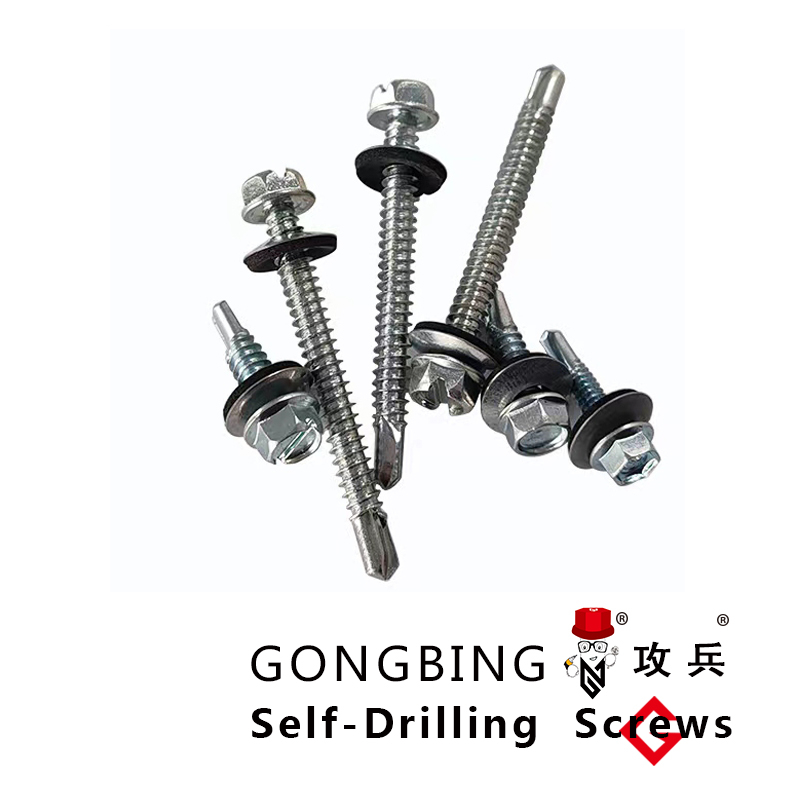Self-Drilling Screws Designed for Concrete Applications with Enhanced Durability and Performance Features
Understanding Self-Drilling Screws for Concrete A Comprehensive Guide
When it comes to construction and building applications, the choice of fasteners is crucial. Among various types of fasteners, self-drilling screws for concrete have gained significant popularity due to their efficiency and ease of use. This article delves into what self-drilling screws are, their applications, and their advantages in concrete fastening.
What are Self-Drilling Screws?
Self-drilling screws, often referred to as Tek screws, are specialized fasteners designed to create their own holes during installation. Unlike traditional screws that require a pre-drilled hole, self-drilling screws have a pointed tip that resembles a drill bit. This unique design allows them to penetrate concrete and other hard materials quickly and effectively, making them an invaluable tool in various construction projects.
Applications of Self-Drilling Screws for Concrete
Self-drilling screws are widely used in a range of applications, including
1. Structural Connections They are ideal for fastening steel members, brackets, and load-bearing components to concrete structures. 2. Facade and Cladding Installation Self-drilling screws are commonly used to attach panels, siding, and other decorative elements to concrete walls.
3. Concrete Formwork These screws can effectively secure formwork in place, providing structural support for poured concrete.
4. Electrical and Mechanical Installations They are suitable for mounting electrical boxes, conduit, and HVAC systems onto concrete surfaces.
self drilling screw for concrete

Advantages of Using Self-Drilling Screws for Concrete
The growing popularity of self-drilling screws can be attributed to several key advantages
1. Time Efficiency The ability to drill and fasten in a single step eliminates the need for pre-drilling, significantly speeding up the installation process. This is particularly beneficial in large-scale projects where time and labor costs are critical.
2. Reduced Labor Costs Since they do not require a separate drilling phase, self-drilling screws save on labor costs. Fewer tools and machinery are needed, which simplifies the installation process and reduces the risk of injury.
3. Strong Holding Power These screws are designed to have a robust grip in concrete, ensuring that connections remain secure over time. This is especially important in applications that bear heavy loads.
4. Versatility Self-drilling screws are available in various sizes and materials, allowing for a wide range of applications. Whether you need screws that are corrosion-resistant for outdoor use or heavier options for structural applications, there is a suitable product available.
5. Improved Aesthetics Many self-drilling screws come with finishing options that can enhance the visual appeal of constructions, making them a popular choice in visible applications where appearance matters.
6. Minimal Damage These screws create precise holes without much effort, reducing the risk of damaging the surrounding concrete, which is essential for maintaining the integrity of structures.
Conclusion
Self-drilling screws for concrete are an excellent solution for various fastening needs in construction. Their innovative design, speed of installation, and strong holding power make them a go-to choice for contractors and builders. As the demand for efficient building solutions increases, self-drilling screws are likely to play an even more significant role in the industry. Whether for new constructions or renovations, understanding and effectively utilizing these fasteners can ensure long-lasting and secure installations. As with any tool, proper selection and application will yield the best results, so it's essential to consider the specific requirements of each project when choosing self-drilling screws.
-
Weatherproof Plastic Expansion Anchors for OutdoorNewsJun.06,2025
-
Sustainability in the Supply Chain: Eco-Friendly TEK Screws ProductionNewsJun.06,2025
-
Load-Bearing Capacity of External Insulation FixingsNewsJun.06,2025
-
Double Head Bolts: Enhancing Efficiency in Industrial MachineryNewsJun.06,2025
-
Corrosion Resistance in Chipboard Screws: Coatings for Wholesale DurabilityNewsJun.06,2025
-
Butterfly Toggle Bolts : Enhancing Structural ResilienceNewsJun.06,2025
